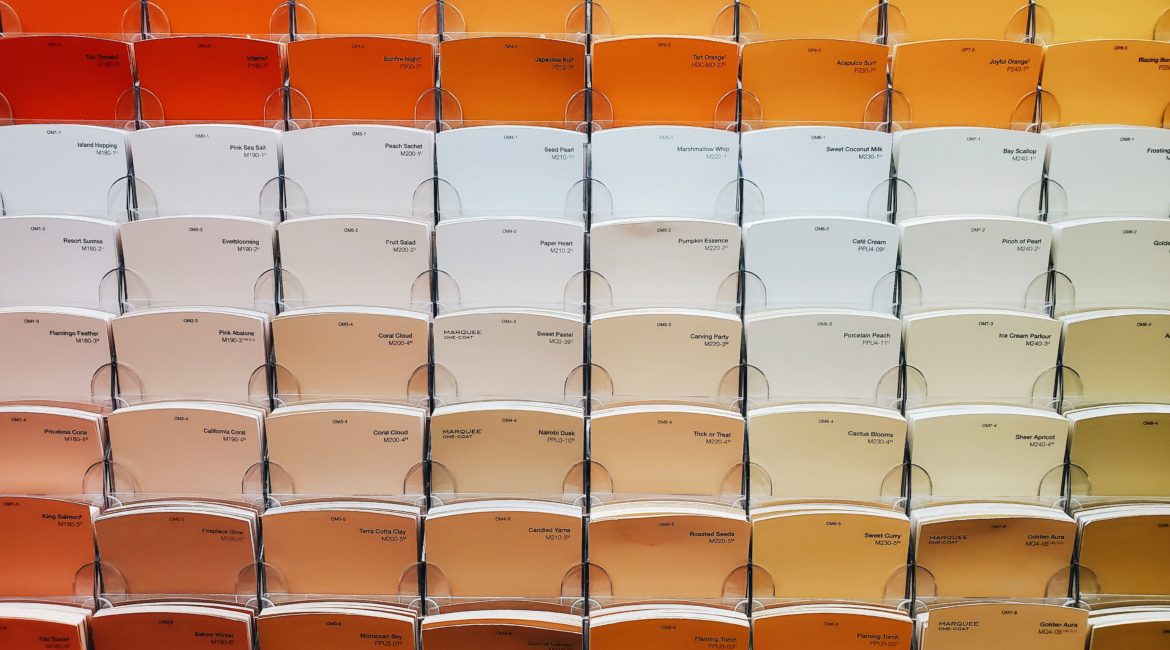When it comes to painting your walls, it’s easy to spend weeks trying to find the perfect color to complement your home. However, many people don’t realize that it is in their best interest to spend just as much time picking out the type of paint they are going to use.
The painting industry has a long history of producing toxic and dangerous chemicals. With the average American spending at least ten hours a day in their houses, it’s important to do our best to ensure that the air we are breathing is as clean as we can make it.
What Are VOCs?
“VOC” stands for volatile organic compounds. Typically used as solvents, VOCs are made by humans for a variety of products, such as paints, paint thinners, petroleum fuels, office equipment, and glues.
VOCs are released as a gas from solids and liquids. When inhaled, they have a variety of both short and long-term effects on the body.
Why Are They In My Paints?
Knowing that VOCs can have an adverse effect on us, you might very well wonder why they are used so frequently in most major paint brands. Unfortunately, they do add a level of ease to the painting process. They assist in giving paint that “flowy” texture that glides easily onto the wall. Additionally, they help maintain the freshness of the paint, preventing it from spoiling.
How Do VOCs Affect My Health?
Because VOCs are released as a gas, they have immediate effects on the respiratory system. Have you ever experienced a stuffy nose or a headache from paint fumes? That is caused by VOCs. Other short-term effects can include nausea, fatigue, eye and throat irritation, and shortness of breath. Those with underlying health conditions, such as asthma, should take special care.
It becomes a little trickier to establish the long-term health effects from VOC exposure. There are specific types of VOCs that have been proven to cause cancer, while others are only suspected. We do know that long-term exposure to high levels of VOCs can cause damage to the nervous system, kidneys, and liver.
There is currently ongoing research to determine the long-term effects of VOCs.

Low VOC vs. No VOC
As people continue to look into more eco-conscious and health-friendly options for their homes, more and more companies have been developing paint formulas to match those morals. While some have gotten rid of VOCs altogether in their paints, others have opted to simply reduce the amount of VOCs in the formula.
In addition to health benefits, both low and no VOC paints have a reduced smell and quicker drying time. Low VOC paints still have chemicals that could cause side effects, so take time to consider where you are planning to paint when making your decision. If you are in a space that is easily ventilated, low VOC paint might be a better option for you. For kids’ rooms, or low ventilation spots, like basements, completely VOC-free paint is a safer bet.
Where Can I Buy VOC Free Paint?
Finding non-toxic paints for your home is easier than ever. Many mainstream brands offer low VOC or VOC-free versions of their paints such as Benjamin Moore, Behr, and Sherwin Williams. We are also big fans of brands like Clare Paint, who create health-conscious paint, in designer-inspired colors. Looking to protect the earth, as well as yourself? You can also check out Real Milk Paint, who creates composable, food contact safe paint, in 56 different shades.






